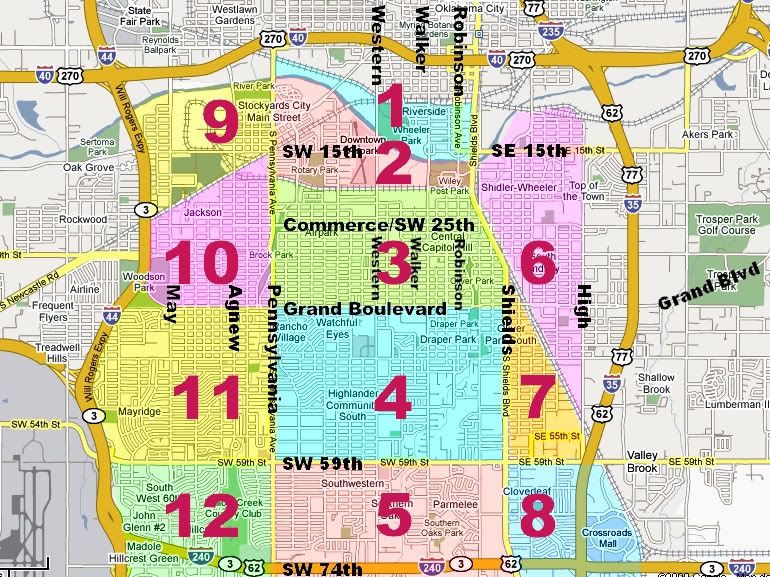"South of the River" - The Community of Capitol Hill
by Jana C. Hausburg
It should have been the home of the state capitol. At least, that was the plan. Home to a promising hill overlooking much of Oklahoma City, the area was named accordingly by B.R. Harrington, a newspaper correspondent for the Wichita Beacon. In 1900, he purchased the land from Miss Tryphosa Boyd, who had been among the early settlers attracted to the area after the Land Run of 1889, when Oklahoma lands were opened by the Federal Government. Her deed bore the signature of President Grover Cleveland.
Harrington platted the 160-acre tract near the old Santa Fe Trail and staked out individual lots for sale. His purpose, said Harrington, was to give "sober and industrious mechanics an opportunity to secure homes."
First Bridge Over the North Canadian, approx. route of Robinson Ave.
click for larger view
The site originally extended from Walker to Santa Fe, and from what is now called SW 22nd to SW 29th, the north boundary being the North Canadian River. Later, it grew to incorporate Penn Ave. on the west, SW 44th on the southern edge, stretching all the way to I-35 on the east.
"At the time Capitol Hill was surveyed, I used a county surveyor, a fellow named Williamson," Harrington was quoted in the Capitol Hill Beacon 60th Anniversary edition. "He asked me what I was going to call the place. I said, ‘Why, Capitol Hill, of course´." Thus, Capitol Hill had the distinguishing characteristic of being the only town in Oklahoma considered as a site for the state capitol before it was even a city. Unfortunately, despite vigorous campaigning on the part of Harrington and his associates, the state capitol was located elsewhere.
* * *
Before eventually becoming a suburb of Oklahoma City, Capitol Hill was an incorporated town, with a decree of incorporation being granted on May 3, 1904. George Flanagan was the first mayor of Capitol Hill, from 1906-1910, and it was during his term that citizens of the area petitioned Oklahoma City for annexation. The vote was 1407 to 188 for annexation, although only citizens of Oklahoma City were allowed to vote; Capitol Hill residents were prohibited from taking part in the election.
Capitol Hill Senior High School Reading Room, 530 SW Grand Blvd.
click for larger view
On December 6, 1909, Capitol Hill became part of Oklahoma City, bringing to the coffers a bonus of more than $12,000 - clearly a boon for Oklahoma City government. However, some Capitol Hill residents had complaints.
"Annexation delayed our improvement and deprived us of many things we could have had long ago," complained an unnamed citizen in the July 1910 issue of the Capitol Hill Beacon. "We could have had sidewalks, paving and a city hall. Instead, our enemies stuck on you a 15 ½ mill tax levy, most of which was later spent on the north side."



 Reply With Quote
Reply With Quote





 I think even the Grant and S.E. readers would agree.
I think even the Grant and S.E. readers would agree.

Bookmarks